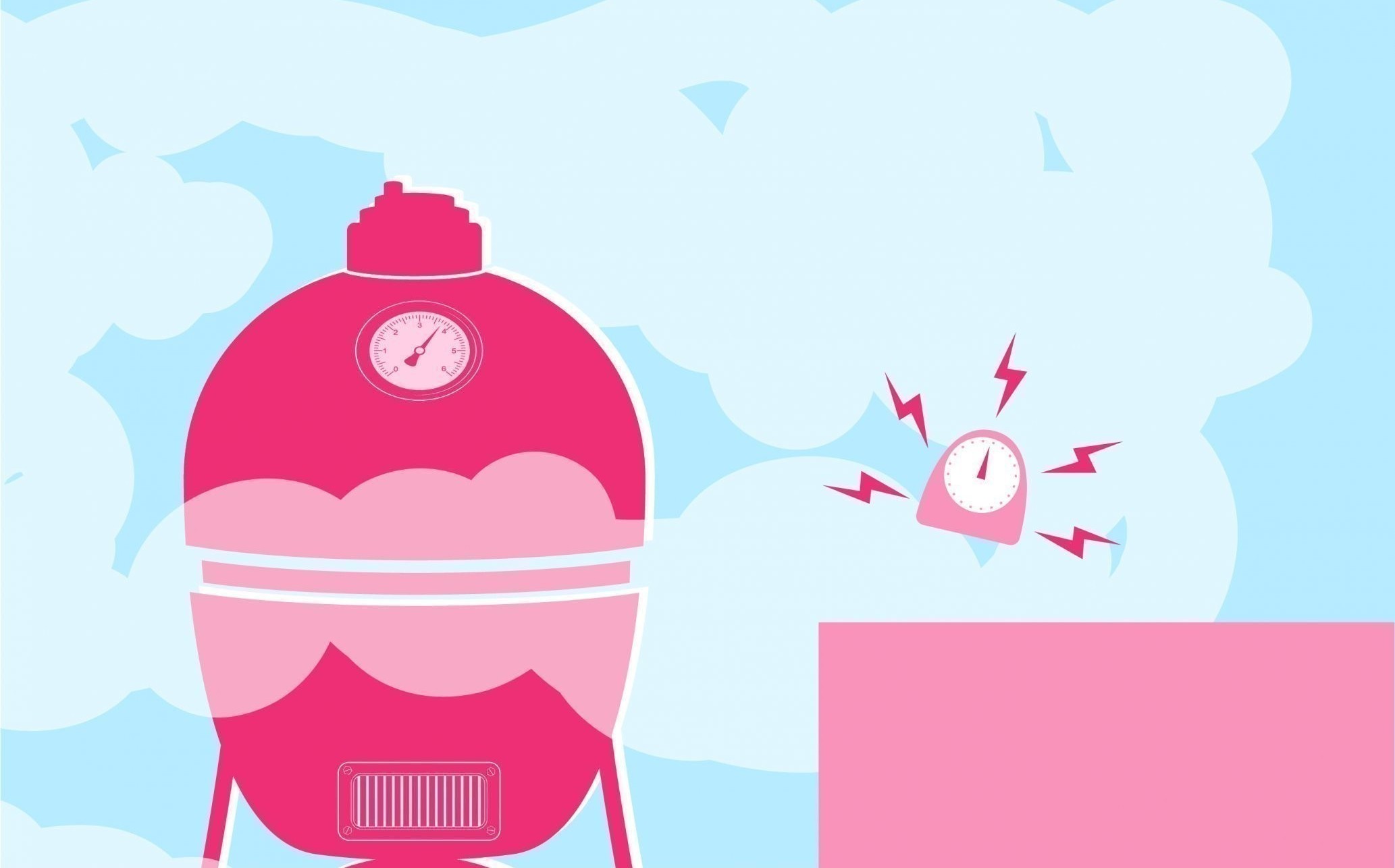I have a confession: I like big butts, and I cannot lie.
Sorry, I meant pig butts.
Over the past couple of years, I’ve become a student of the art of smoking meat. This has led me to spending hundreds of hours rubbing down meat, tending to a fire and, of course, sampling. As you’d expect, I’ve learned a lot and gotten much better over the years (my Notorious P.I.G. Smoked Chili has proudly taken best chili two years in a row at OOH’s chili cook off). But one thing I’ve unexpectedly come to realize is how my work with sweet and smoky meats parallels my job in branding.
So sit down, grab a fork and dig in. Let’s take a look at my branding lessons learned from smoking meat.
1. Ingredients Matter. But So Does Patience.
Papa John isn’t wrong — better ingredients mean better results. But that’s part of the beauty of smoking. You can take what is normally a low quality meat and cook it low and slow to bring out this melt-in-your-mouth flavor and wonderful textures. Take a brisket, for example. This cut comes from the front of steer, and supports the majority of the animal’s weight. That means it has deep and strong connective tissues that can cause meat to be a chewy nightmare. But smoke a brisket for 15 to 18 hours at 225º, and holy cow. It’s the best thing you’ll ever eat.
Doing a branding project is just like cooking a brisket. If you rush it, you won’t like the results. Even if you know at the core of your brand is a tough piece of meat, take your time to think about how to position it to win. It’s the only way you can break down the tough pieces that lie at the core of your brand. If you try to turbo cook the process, you’ll end up with something that’s hard to swallow. And just like a restaurant that serves one bad dish, you might not get a second chance at winning over your customers.
2. Don’t Be Afraid to Be Bold.
MSG is the controversial flavor enhancer that’s often found in Chinese food, as well as barbecue. Barbecue competitions often ban the ingredient, because it’s an easy way to amp up your flavor with little technique. There are a lot of things that go into winning a competition, but being memorable is one of the most important. MSG as a flavor enhancer gives an unfair edge, in the minds of the judges. So competitors find other unusual ways to make their foods memorable — an unexpected kick of heat on a food that’s normally sweet, or maybe a tangy twist on a traditionally spicy dish.
Of course, it helps to know how to cook great food. But either way, there’s an important takeaway here: If you want your brand to be memorable, think of how you’re going to separate yourself from the competition. In the land of commodities, this is even more important. Look at what Yeti has done with its brand. Even while competitors are offering nearly the exact same product at half the price, people still want the Yeti cup or cooler. Two brothers built a cult that’s seen 750% growth over the past three years to become at $450 million company. The reason? They built a powerful and bold brand, which led to a grassroots following. The tagline “Built for the Wild” has resonated so strongly with people, you have guys living in Texas bragging about how their cooler is grizzly proof. For the record, you won’t find a grizzly in a 1,000 mile radius of Texas.
3. Don’t Get Complacent. Push Yourself.
I’ve almost never cooked anything the same way twice. I’m constantly deviating from recipes I’ve tried a dozen times, and pushing my own recipes further. It sometimes ends with me sitting down to dinner with my wife to say, “Well, it’s pretty good but I think the last time was better.” So maybe the next time I use a little more apple wood on the smoker or a little less maple syrup in my homemade barbecue sauce (actually, that’s a bad example, the answer is always more maple syrup).
Your brand should be the same. Constantly evaluate how your brand is connecting with your end users. Where can you take out some MSG to add a little more kick? Maybe you can spend a little more time thinking about how to break down the toughest parts of your brand. No matter how old or established your brand is, there is always room for improvement. You just have to take your time and push yourself to find where those opportunities lie.

